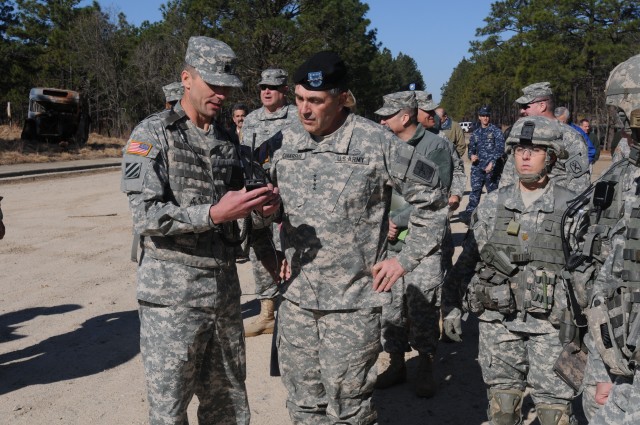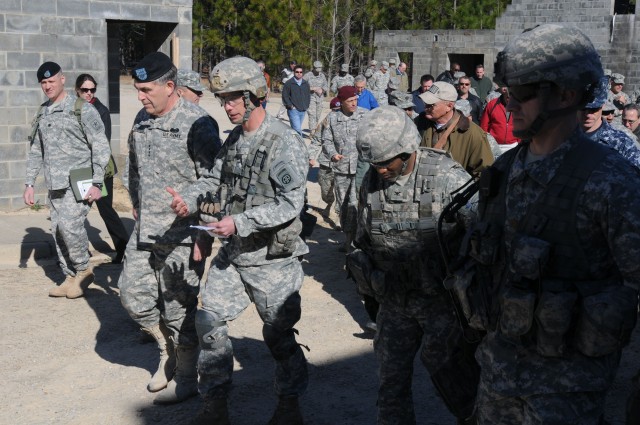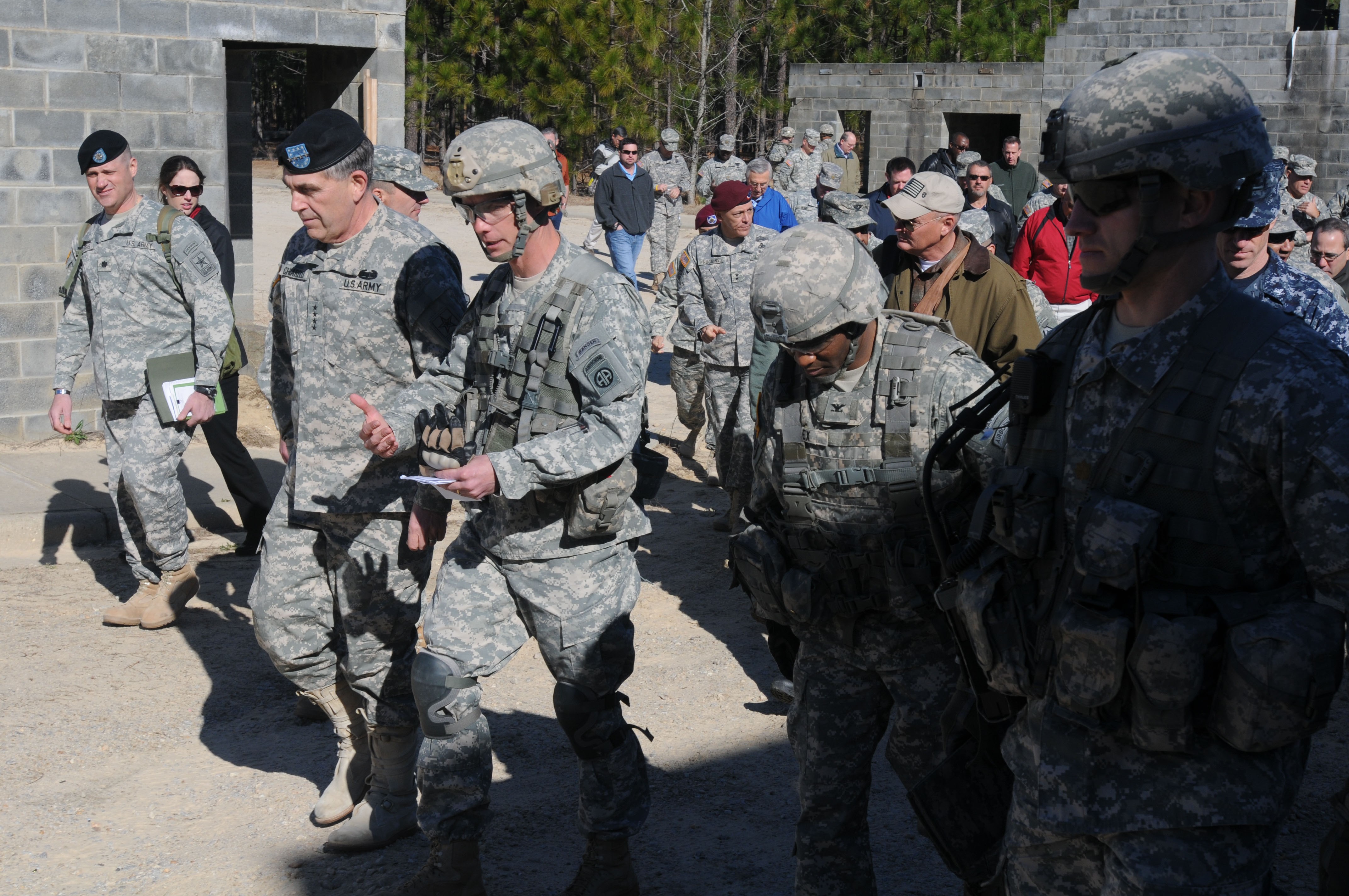FORT MONMOUTH, N.J. - A technology demonstration integrating the flexibility and storage capabilities of an Android hand-held and the robust communications of the rifleman radio caught the attention of the Army vice chief of staff during his visit to Fort Bragg, March 3.
Gen. Peter W. Chiarelli joined Army engineers and Soldiers from the 82nd Airborne Division for a demonstration of a tactical network excursion to test the use of rifleman radios enhanced with Android display devices to send data and voice information in a realistic field environment.
"The object of the excursion is to send information from the rifleman on-the-ground all the way up over the WIN-T system to a battalion TOC [Tactical Operations Center] that's located somewhere else," said Richey Gunsaulis, field engineering lead for JTRS Hand-held, Manpack and Small form fit program, or JTRS HMS.
"The Soldiers' feedback was positive--they want this capability, now. Although still in the developmental phase, it represents a significant evolution in the Army's Network modernization program. Bottom line: we must do everything we can to get these types of needed capabilities out to the operational force as quickly as possible," Gen. Chiarelli said.
Research and development efforts made leading up to the excursion involved collaboration among Joint Program Executive Office Joint Tactical Radio System, PEO C3T, Program Manager JTRS, and engineers from the U.S. Army's Communications-Electronics Research, Development and Engineering Center.
The excursion itself was executed by utilizing two JTRS form factors, the Rifleman radio and the HMS Manpack radio. In short, the rifleman talks to the manpacks and the manpacks then talk to Warfighter Information Network-Tactical, or WIN-T, which handles the routing and satellite network.
"The purpose of the test is to simulate applications and information that could be passed across networking waveforms and the radios, and to show that we are interoperable with WIN-T which is already out in the field," said Gunsaulis.
In addition to the radio itself, each Soldier was equipped with a Nexus one Android-based smart phone. While the radio itself is the network interface, the smart phone acts like a display and storage device for applications.
In this instance, the smart phone utilized two primary applications. One of the apps, JBCP, correlates position location information of each of the Soldier's radio broadcasts to one another, and shows it on a moving map. The other app, TIGR hand-held, acts as a database of information, from spot reports to photos that enables Soldiers to both pull information down from a main server or to upload it for others to use.
"Say an IED went off across the street - you might take a picture, map the information about where it was at, who was involved, etc - it's a huge database of information. The hand-held app pulls it down from the server and shows it on a map," said Blake Hamilton, field engineer for CERDEC's Software Engineering Directorate. "If you were trying to figure out if you should go one way or another, you can see all of the information that happened and you can plan your route."
During the testing at Fort Bragg, scenarios similar to Hamilton's example were simulated by the 82nd Airborne unit, C Company 1/505, 3BCT in order to demonstrate the usability of the applications running on the technology.
"The unit incorporated the system into several days of platoon simulated training exercises to include IED, react to contact and hasty defense," said Jeff Palumbo, field engineer for Program Manager JTRS HMS. "During the JTRS network excursion, I was pleased to see a very promising, improved situational awareness capability demonstrated as part of a planned training exercise with a company of Soldiers from the 82nd Airborne," said Gen. Chiarelli.
According to Palumbo, the capabilities and applications demonstrated during the excursion received positive feedback from the unit who tested the device.
"The Soldiers really loved the system - both the voice capability inherent to the radio and the situational awareness and command and control the display device provided. Not a day went by that the Soldiers were not asking to keep the radios for good," Palumbo said.
"The ability to communicate is absolutely critical in today's operational environments. In particular, Soldiers at the tactical unit level, or what we refer to as the 'Edge,' must be able to send and receive information via voice, data and video 'real-time,' on the move," said Gen. Chiarelli.
Related Links:
Smartphones combine with tactical radios to boost ground troops




Social Sharing